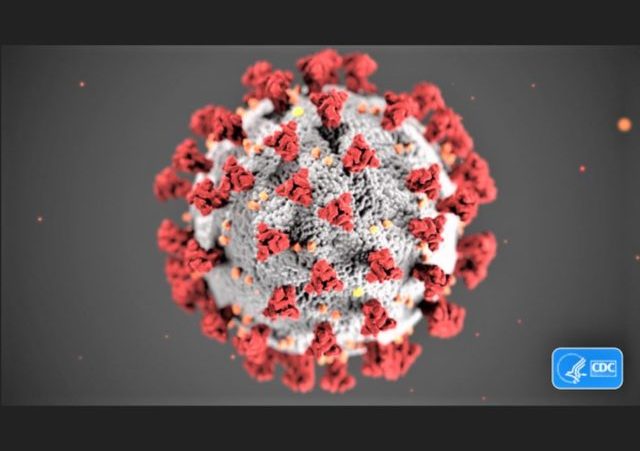Duke University Testing Drug Which Shows Promise Fighting Coronavirus
“More than half of a group of severely ill coronavirus patients improved after receiving an experimental antiviral drug”

This is the best thing about our higher education system. High tech labs with real scientists.
FOX 8 News reports:
Duke University testing drug that shows promise in fighting coronavirus, doctors say
More than half of a group of severely ill coronavirus patients improved after receiving an experimental antiviral drug, although there’s no way to know the odds of that happening without the drug because there was no comparison group, doctors reported Friday.
The results published by the New England Journal of Medicine are the first in COVID-19 patients for remdesivir. The Gilead Sciences drug has shown promise against other coronaviruses in the past and in lab tests against the one causing the current pandemic, which now has claimed more than 100,000 lives.
No drugs are approved now for treating the disease. At least five large studies are testing remdesivir, and the company also has given it to more than 1,700 patients on a case-by-case emergency basis.
Friday’s results are on 53 of those patients, ages 23 to 82, hospitalized in the United States, Europe, Canada and Japan. Thirty-four of them were sick enough to require breathing machines.
All were given the drug through an IV for 10 days or as long as they tolerated it.
After 18 days on average, 36 patients, or 68%, needed less oxygen or breathing machine support. Eight others worsened.
 DONATE
DONATE
Donations tax deductible
to the full extent allowed by law.








Comments
Let’s see…
Finding ways for people to not get the virus, throw it off if they get it, recover if they get bad, all help the population in general. Less deaths. Less outages. Less interrution. Net: more living life.
Semi-effective treatments for folks in extremis — hero health care folks, n respirators — are dramatic, but really, better it never gets so far.
Locking down everything for everyone makes a nice dystopian plague story (Also cheap, easy, and been done.) Some people not doing some things is not nearly so dramatic.
It’s almost like the interest and energy has been pointed at things that feed off the rolling “crisis” vs. remove it. Weird, that.
Here’s some stuff we’re not hearing, because govt agencies, bureaucracries, professional and industry institutions, and so on are fundamentally “conservative” in the non-political sense of “conservative.”
— Any ways to go about life, w/o transmitting the Kung Flu? This is neither the Pandemic Virus from The Last Ship, nor Ice9. How virulant is it, really. (Hint: It just dies at differnt rates on different surfaces n conditions. Whatever kills it quick, spread around doing that?)
— How do you not get the Kung Flu if exposed? (Hint: Viral load / immune system strength.)
— How do you have the CowPox version — mild, but innoculating, like CowPox was for SmallPox — if you do get the Kung Flu? (Hint: Get some rest? What’s the clinically-vetted formula for minimizing course of a cold, flu, and now Kung-Flu?)
— How do you self-care to keep the course of the disease minimized. (Something from 1/4 to 3/4 of cases have limited or minimal sympotome.) (Hint: Movement disrupts development of pneumonia: clinically significant and reproducable.)
— What are the supporting therapies that change the course of the disease, before you get to the ICU and a respirator (or even a hospital?) (Hint: Anti-virals. surfactants. targeted tissue support / amplification. ?self-cultured targeted stem cells?)
— Are there likely medically delivered therapies that would mitigate the course of the disease or symptoms? (Hint: Scary, dangerous drugs n cocktails you don’t want people self-medicating with might do some good. We already know NSIDs-NO, Tylenol-family yes. What else?)
— In extremis, are there other ways to provide the assist given by a respirator?(*)
I am neither a certified virologist, nor an official epidemi-guy. Nor do I play either on the interwebz. However, looking at how a process of obscure mechanism proceeds in bulk is general. It used to be called “Operations Research.”
And people who get things done know that state of the art informed “experts” keep you from blind alleys, n leaving options on the table out of ignorance. They also should never be in charge of getting results from complex systems. Their brilliance in what they do know, blinds them to everthing else: headlights at night are a problem because of the other stuff you can’t see in their glare.
Idiots.
(*) Respirators for Kung Flu are to keep O2 up enough that you don’t die, when your lungs can’t inflate because of the inflammation / swelling. Other ways to goose the O2 uptake? Some evidence that Kung Flu attacks cells that produce surfactants — chemicals that increase the O2 / CO2 migration between blood and air.
“More than half of a group of severely ill coronavirus patients improved after receiving an experimental antiviral drug, although there’s no way to know the odds of that happening without the drug because there was no comparison group, doctors reported Friday.”
Hmmmm. . . . Seems to me there would be a vast pool to use as a comparison group. You can do some rather simple statistical comparisons likes a Student’s T of the population that received the experiment drug against the vast numbers that have not. You can also slice he “have not” population to derive a comparison of similar cases (age, weight, comparable co-morbidities, and even genomic strain).
This does not seem too hard to me.